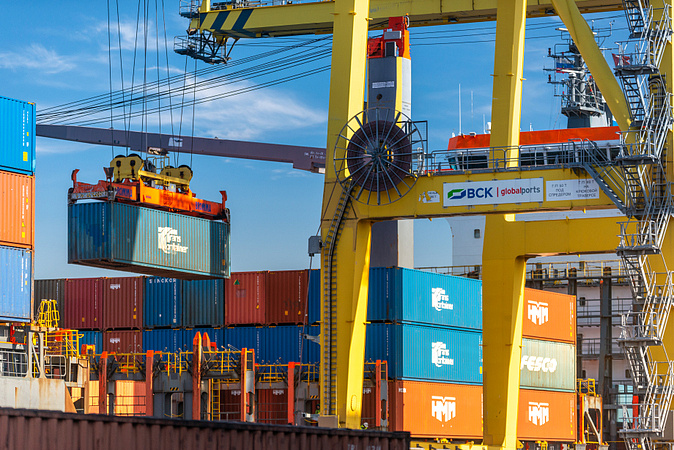
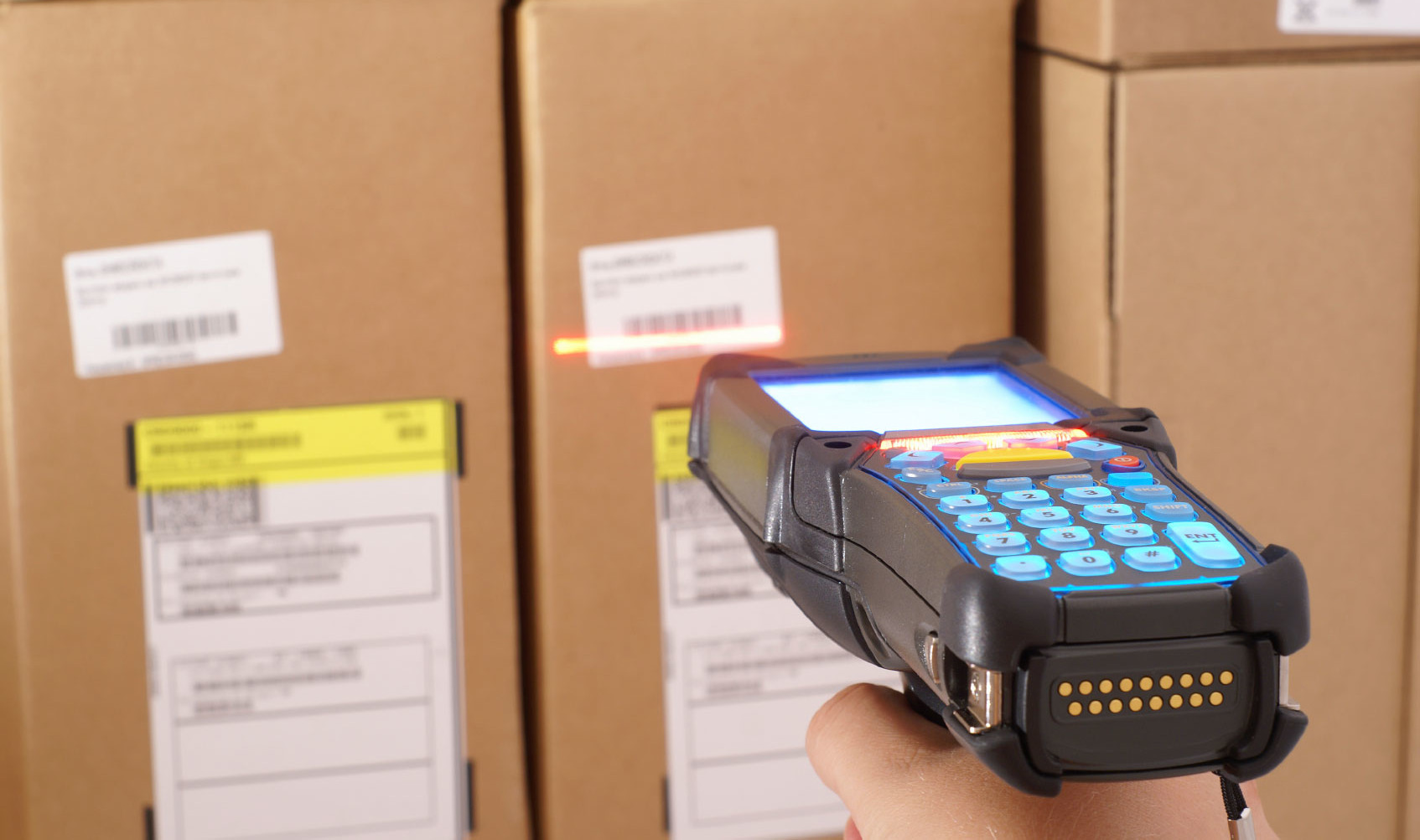

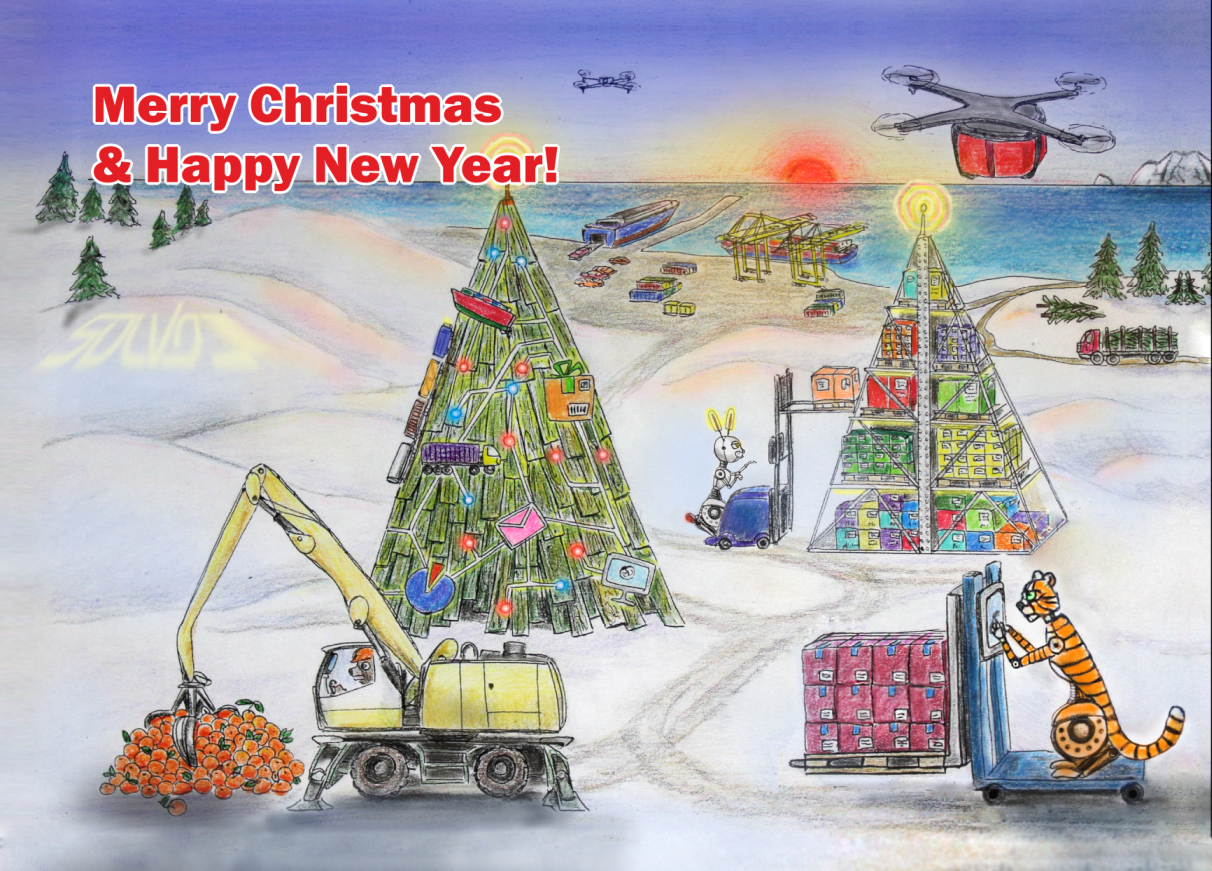


In the past few years, high-speed container trains have really caught on in Russia for transporting containers across the country.
High speed container trains are created exclusively from flatcars for transporting containers and run in accordance with the established schedule without or with minimal stops along the path.
Today, high speed container trains regularly run between Moscow and Saint Petersburg to China and Russia’s Far East.
The benefits of using this transport method include:
· Speed of delivery (manifolds increase – more than 1000 km per day);
· Strict train schedule;
· No need to reload containers from flat car to flat car;
· Expedited train processing at shipping and destination points.
The last point became a reality thanks to the implementation of state of the art information technologies at container terminal. Similarly, the Smart Container Terminal was also developed at one of the stations of “TransContainer” near Novosibirsk at the end of 2017 -- with SOLVO as the contractor – realized a series of innovations including support for operations with high speed container trains.
The information system makes it possible to register rail cars and trains in various ways including using a special video system and algorithms to recognize and record rail car numbers upon arrival. Moreover, the system can automatically create sea container loading plans for flat cars of the high speed container train based on technical conditions, control processing and generate accompanying documentation.
The launch of delivery services via high speed container trains entails new requirements for information systems at terminals and stations. One of these is the need for automatic schedules of train arrival and departure.
Solvo.TOS makes it possible to create a high speed container train schedule based on which the system will automatically plan shipment of specific orders, listing data related to delivery stations, time of departure and more.
For example, an order arrives at the terminal, based on which a container must be sent to a client in Zabaikalsk via a high speed container train. The date is set to September 15. When the order arrives, the system will automatically analyze the high speed train schedule. If a train to Zabaikalsk is available, the given container will be included into the given loading list for the specific train. The system will also plan the most optimal stowage location for the given container at the warehouse to further reduce the number of unproductive moves, saving time and money.
The terminal employee can easily create a high speed container train schedule in the system either manually by using a special interface or import the schedule from third-party information systems.
Rail operations typically involved working with data capture terminals to record train arrival. As soon as the train arrived, it was necessary to record this even in the device as soon as possible.
But now thanks to optical character recognition technology (OCR), container terminals can automatically identify the arrival/departure of trains, including high speed trains. This saved a lot of time for acceptance-delivery agents and tallymen as a result.
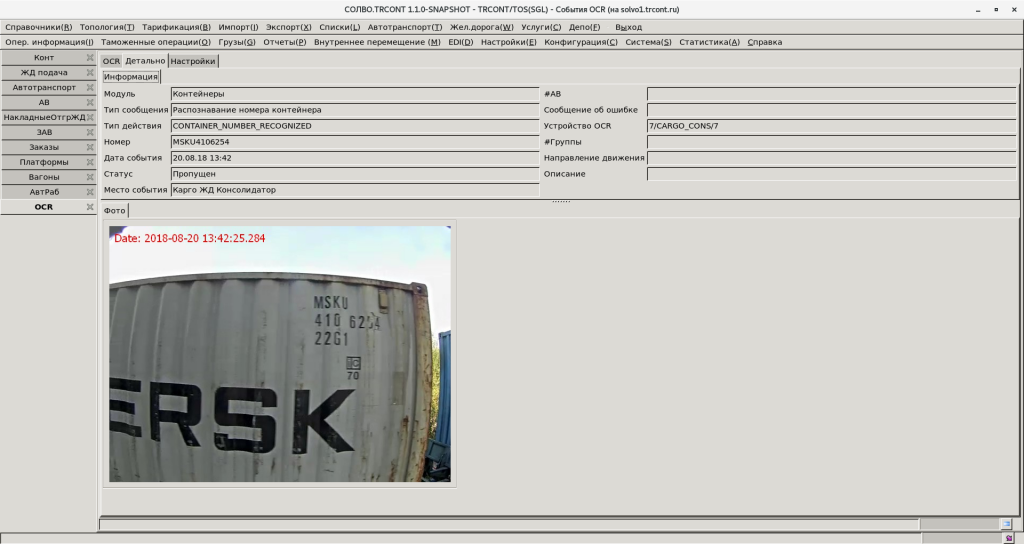
It is not possible to ship any cargo without complying with the container putaway rules for rail cars and their distribution based on the flat car model.
Checking whether the containers on the flat cars are correctly placed in accordance with the technical specification manually involves manually checking reference lists. This makes it a very labor-intensive process, particularly for creating high speed container trains.
Modern information technologies can help here too. For example, Solvo.TOS supports the ability to comply with technical specification for flat car container loading during automatic inspection as well as during automating train planning.
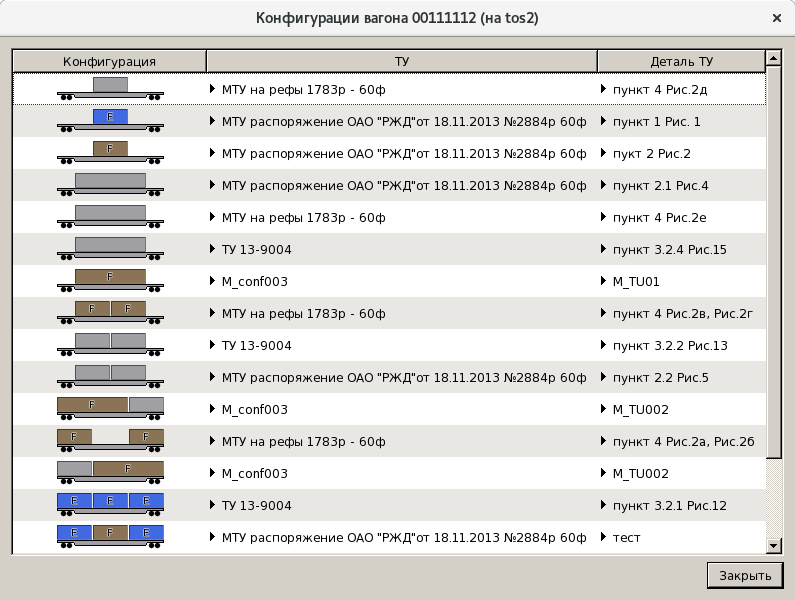
High speed container train loading and unloading planning
Planning loading of individual rail cars manually using classic xls tables is an outdated practice. Nowadays, there are hundreds of parameters and requirements for building high speed container trains that are taken into account in special systems used for this purpose.
In Solvo.TOS, a special graphical interface called “High speed container trains” exists where the user can import data about high speed trains and plan loading operations in various modes: manual, semi-automatic, automatic.
For planning in automatic mode, the user must only create a new train in the system specifying its length in rail cars, number of containers to be loaded, and issue a command to automatically plan the train using the quick menu.
In manual mode, the planner will drag and drop containers from the loading list to available flat car. If any discrepancies arise in the rail car configuration, scales etc. the system will immediately display an error message and comments about which technical specification rules are not followed by the given action and will offer a replacement.
The system will also make sure that the same rail car is not added to multiple trains. When adding rail cars to a high speed container train, the system will automatically calculate the length of the train, combining the rail car parameters – the length by coupled axles – and will compare it to the length of the train by standard rail cars.
Automatic mode makes it possible to save significant time when selecting rail cars for loading high speed container trains while also reducing the possibility of human error. The system will select rail car with consideration of such parameters as readiness, idle time, repair date, owner, remaining mileage, etc.
Meanwhile, stowage is optimized with special algorithms used in the system. For example, if there are more rail cars than containers, the system will make sure that the containers are distributed evenly along the train. If there are less rail cars than containers, the consolidation algorithm will be applied.
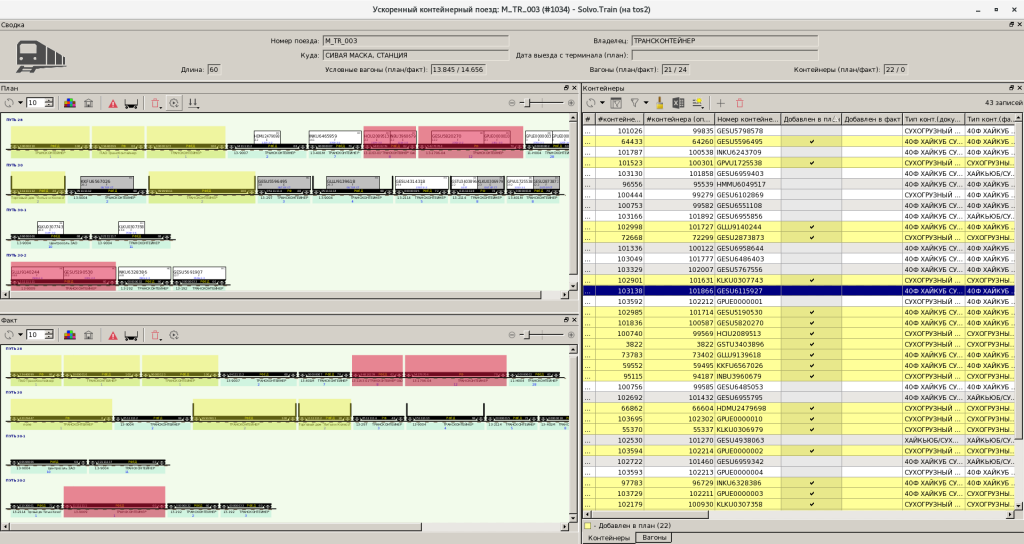
When planning container stowage on the rail cars, the system will give priority to loading containers with the same destination station.
Information technologies make it possible to significantly speed up and simplify receiving of containers from arrived trains. To do this, mobile Wi-Fi data capture terminals are used to read and recognize symbols (OCR). Meanwhile, the system will automatically create jobs for CHE unloading operations, for example, for RTG, RMG or reachstackers. Meanwhile, the system will work in accordance with routing rules distributing tasks among process participants.
System users can use a special information where a graphical layout displaying train loading/unloading operations in real-time. The displays the entire train operations area as well as separate tracks and trains. This allows the dispatcher to monitor the entire process and react in a timely manner.
The value of information technologies at marine or inland container terminals is difficult to overestimate. In the near future, rail cargo volume can increase substantially, with container flows to China expected to increase three folds according to the Russian Export Center. Therefore, high speed container trains will only grow, which will require efficient tools for transshipment complex operators – which means state of the art information technologies that can track rail cars and cargo, but also optimize processes, and provide full control, while facilitating decision making.
A representative of TransContainer, whose complex uses Solvo.TOS for container terminals, says:
“Using the system made it possible to reduce rail car idle times by 0.1 days, reduce rail car turnover by 0.1 days, reduce container lay time by 2 days, reduce container turnover by 0.2 days, minimize unproductive runs during cargo handling operations, which all translates to less expenses related to time, fuel, electricity, and repairs.”By Daniel Pershin, head of marketing, SOLVO





